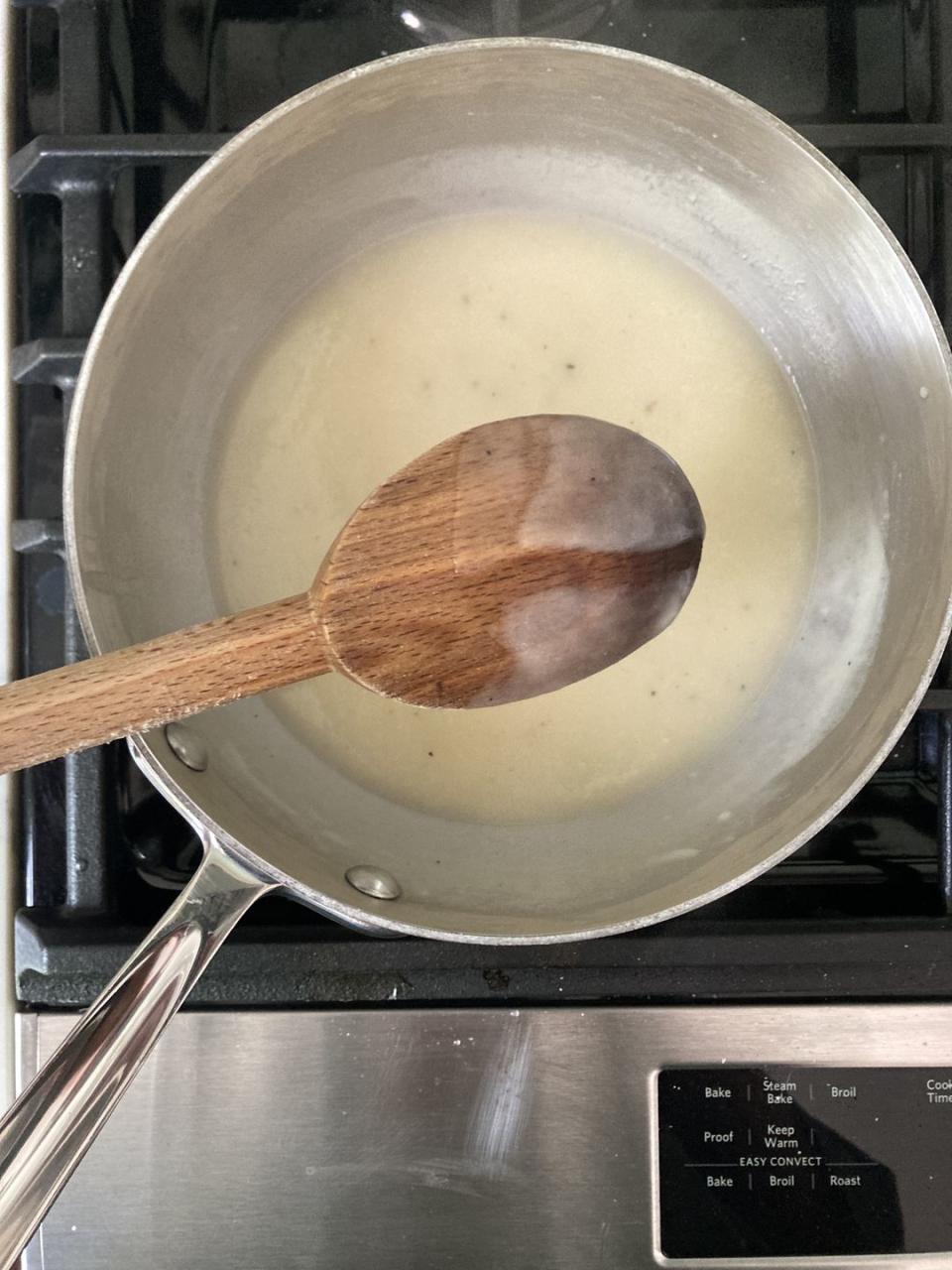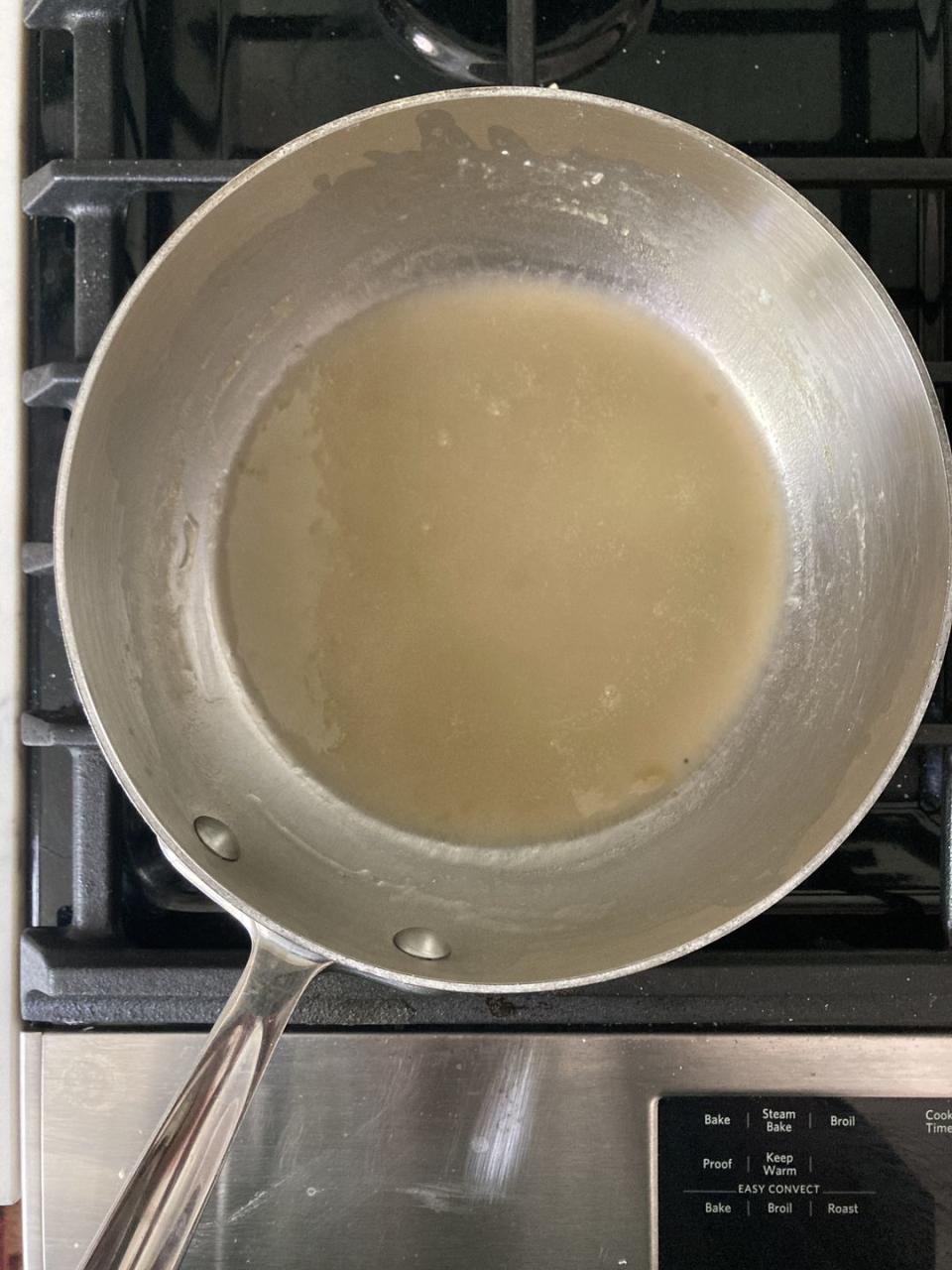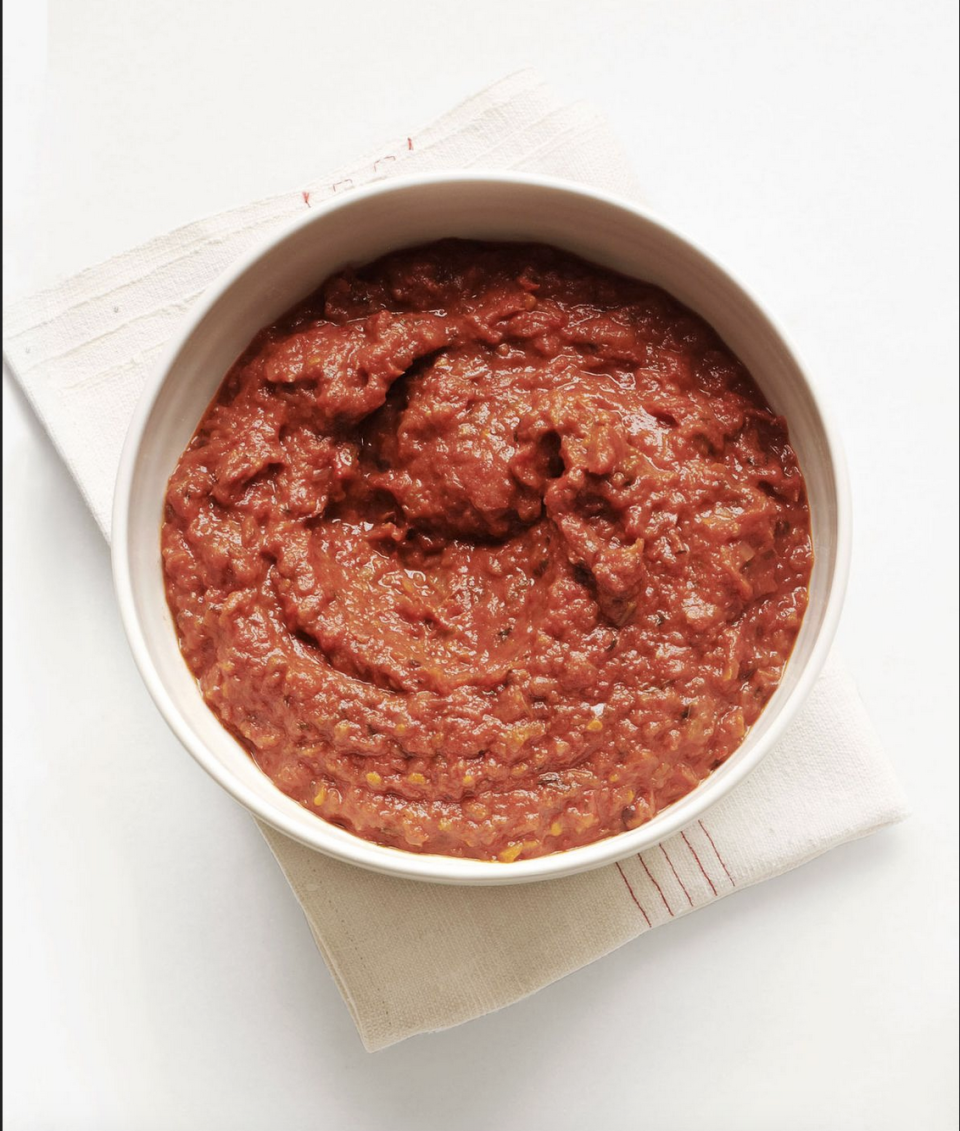How to Easily Thicken Sauces and Gravy

It’s happened to the best of us. You’ve roasted the Thanksgiving turkey and used the pan drippings to make gravy but unfortunately it turned out thin and runny. Not all is lost! There are a few simple solutions to help get the thick, silky gravy you desire. It's tempting to dump everything out and start over, but if you don't have the ingredients or time, you'll want to try these helpful tips.
How to Use Flour to Thicken Sauce
It's tempting to attempt to thicken sauce by simply adding more flour. After all, flour acts by binding liquid with starch molecules. But if you were to stir flour directly into a sauce, there is a very good chance you would end up with an unsavory, clumpy mess.

There are a few options to avoid this happening. You can make a slurry (flour, cornstarch or other thickening agent that has been mixed with a small amount of liquid). You can melt butter and stir flour into it, called a roux. Or you can mix it with room temperature butter to form a paste (also called a beurre manié, or kneaded butter).
How to Make a Slurry: For 1 cup of sauce, mix 2 tablespoons flour with 1/4 cup water until there are no lumps. Slowly whisk into your sauce until smooth. Simmer until thick and bubbling and the flour taste is cooked off, 3 to 4 minutes.
How to Make a Roux: For 1 cup of sauce, melt 2 tablespoons butter or oil in a saucepan then stir in 2 tablespoons flour. Cook, whisking constantly, about 1 minute. Slowly whisk in sauce until smooth. Simmer until thick and bubbling and the flour taste is cooked off, 2 to 3 minutes.
How to Make a Paste: For 1 cup of sauce, stir together 2 tablespoons flour and 2 tablespoons room temperature butter. Slowly whisk into your sauce until smooth. Simmer until thick and bubbling and the flour taste is cooked off, 2 to 3 minutes.
Note: Flour will not greatly alter the taste of your sauce, but butter might. This additional richness should work fine in a gravy and cream sauce but might not be so great in a glaze or barbecue sauce.
How to Use Cornstarch to Thicken Sauce
For a gluten-free option, use cornstarch to thicken your sauce. Cornstarch (a fine white powder made from the endosperm of corn kernels) has twice the thickening power as flour so you only need half as much to get similar results. And while flour can cause a sauce to appear cloudy cornstarch produces sauces that are silky and shiny.

Cornstarch is a very fast acting thickener. When cooked cornstarch molecules expand and soak up liquid (the same way rice, potatoes, and polenta do). You must always make a slurry with cornstarch and a liquid before adding it to a sauce. Otherwise, you will end up with a sauce that has little clumps of cornstarch floating in it.
How to use cornstarch to thicken your sauce: For 1 cup of sauce, mix 1 tablespoon cornstarch with 1 tablespoon cold water until there are no lumps. Stir into your sauce and bring to a boil. Reduce to a simmer and cook until thick and bubbling and the cornstarch taste is cooked off, 2 to 3 minutes.
Tips:
If you make your slurry ahead of time, be sure to stir it before adding it to the sauce because the cornstarch will sink to the bottom and need to be reincorporated.
While cornstarch requires heat to work, it can lose its thickening power if cooked too long. So, once you sauce has reached its desired thickness remove it from the heat.
On the other end of the temperature spectrum when frozen cornstarch can break down causing defrosted sauces to be thin.
If you happen to find yourself in the U.K. and in need of cornstarch note that it will be labeled cornflour (not to be confused with corn flour in the US, which is finely ground corn meal.)
How to Thicken Sauce Without Flour or Cornstarch
There are plenty of methods for thickening a sauce or gravy without flour or cornstarch. These take a bit more time and work but can result in sauces that are rich and full of flavor.
Reduce the sauce: Reducing a sauce is one of the simplest and most flavorful methods. By simmering the sauce over low heat, you allow the water to evaporate, which concentrates the flavors and naturally thickens the consistency. Be patient, as this process can take some time depending on the amount of liquid.
Add a Pureed Vegetable: Vegetables such as potatoes, carrots, and winter squash can be cooked until soft, then blended into a smooth puree and added to your sauce or gravy. These vegetables not only thicken the sauce but also add extra depth and nutrients. For a smoother texture, you might want to pass the puree through a fine mesh strainer before incorporating it into the sauce. Be mindful that many vegetables like carrots and squash will change the flavor of your sauce.
Stir in a Legume Puree: Cooked lentils, beans, and chickpeas can be pureed to a creamy consistency. Adding a few spoonfuls of legume puree can thicken your sauce while also boosting its protein content. For a smoother texture, pass the puree through a fine mesh strainer before incorporating it into the sauce. This method works particularly well for those wishing to create heartier sauces and gravies.
Add a Dairy Product: Heavy cream, sour cream, or Greek yogurt can thicken a sauce while adding a rich, creamy flavor. However, it's important to add these slowly and on low heat to prevent the sauce from curdling. For a non-dairy option, coconut milk or cashew cream can be excellent substitutes.
How to Thicken Tomato Sauce
Tomatoes by nature have a high-water content. So whether you are using canned tomatoes or those you grew in your garden to make sauce for spaghetti, it’s inevitable that your tomato sauce will need to be thickened.

It's best to avoid flour or cornstarch when thickening tomato sauce. Flour will give the sauce an undesired flavor and the acidity in tomatoes can cause cornstarch to lose some of its effectiveness. Here are three alternative methods that work great to thicken tomato sauce.
Reduce the Sauce: While this method can take a while, it not only thickens the sauce but also intensifies its flavors, concentrating the rich tomato essence. Begin by simmering your sauce over low to medium heat in an uncovered pot, preferably one with a wide surface area, which allows more moisture to evaporate quickly. Stir the sauce occasionally to prevent scorching. Depending on the initial water content and your desired thickness, this process can take between 30 minutes to one hour. Because you are cooking off water and concentrating the flavors don’t fully season the sauce until it has reached the desired thickness.
Use Tomato Paste: Available in tubes or cans, tomato paste is a highly concentrated, paste like version of a tomato puree. It has little water content making it a quick and effective way to thicken tomato sauce. Stir in a couple of tablespoons and then cook for 5 to 10 minutes to allow the flavors of the sauce to meld.
Stir in Grated Cheese: Adding grated Parmesan or Pecorino Romano cheese can thicken the sauce while providing additional savory flavor. Sprinkle the cheese, by the handful, directly into the hot sauce and stir until melted and well-incorporated.
You Might Also Like

 Yahoo Lifestyle
Yahoo Lifestyle 
